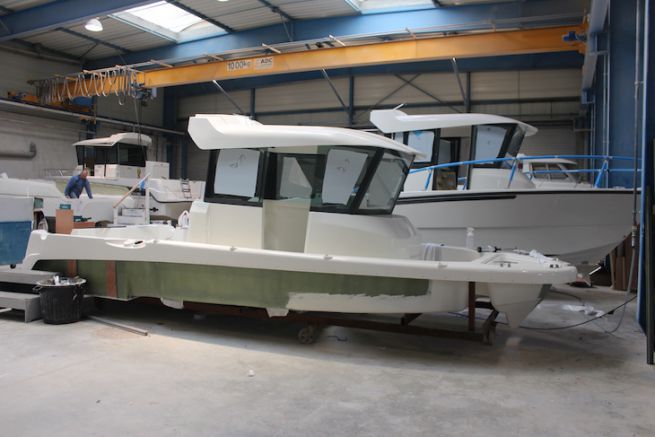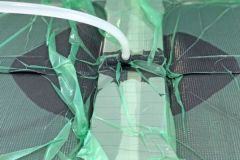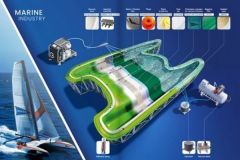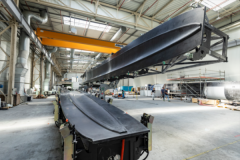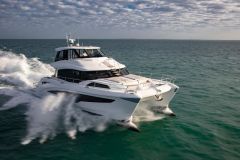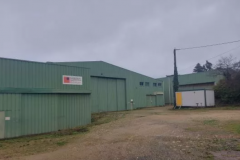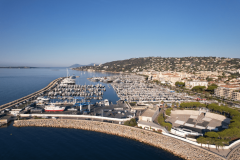The Ocqueteau shipyard was founded in 1948 by Guy Ocqueteau, a marine carpenter. Located on the island of Oléron, it is today managed by Christian Monier, since its acquisition in 2013 from Jean-Pierre Mellier. Today, the yard is a specialist in the infusion construction of motor boats with small units (5 to 10 m). It was hit hard by the crisis in 2008 and has been benefiting for a year from the recovery of the 5 to 10 m units sector "The shipyard got away with subcontracting polyester parts for military boats. For example, Sillinger has repatriated its production to France and we make them benefit from our specificity in infusion" explains Charlotte Marijon, in charge of communication and the commercial aspect of the project.

The site, which produced 65 units in 2013, has managed to climb back up the slope with 150 units produced in 2017 "We have enormous potential. We managed to survive the crisis, but Ocqueteau remains fragile. Before the crisis, the yard produced between 450 and 500 units per year at the Oléron site" charlotte explains.
Today 51 employees work in the Oleron shipyard on the production site where around 15 boats can be built at the same time if they are less than 7 m long.
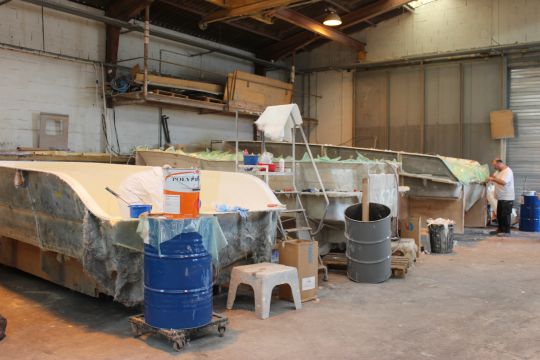
Boats for fishing
" In the minds of boaters, Ocqueteau is synonymous with a fishing boat ", as Charlotte explains, "We didn't choose to specialize in the fishing market, but we were labeled fishing boats." Today, the Ostrea range - fishing range - represents Ocqueteau's core market with 3 models - 600, 700 and 800 - available in several versions "This year, out of 150 boats sold, we sold 38 Ostrea 600. It's our best seller." explains Charlotte.

Designing boats
The future boats are designed in-house by the design office and in collaboration with architects. It is then necessary to define the program of navigation (pleasure, sport, fishing...) as well as the guidelines in terms of design and lines. Then come the specifications, then the budget given for the creation of this new boat.

Building infusion boats
At Ocqueteau, the boats are built using the IFH infusion technique, through different stages and halls: gelcoat, iso + mat, sampling and resin, before being demoulded in the main shed, for boats up to 6 m. The boats then pass through the cutting workshop before being decked and finished.
Up to 7 m, the boats are built in"simultaneous projection" and from 7 m they are made in contact. This is also the case for small parts such as seats, chests, pilot's deckhouses...
At the site, each person has a specific know-how, except on the finishing station where the employees have transversal skills. Thus, there are different halls
- Stratification
- Cutting
- Finishing (multi-activities therefore varied know-how)
- Carpentry
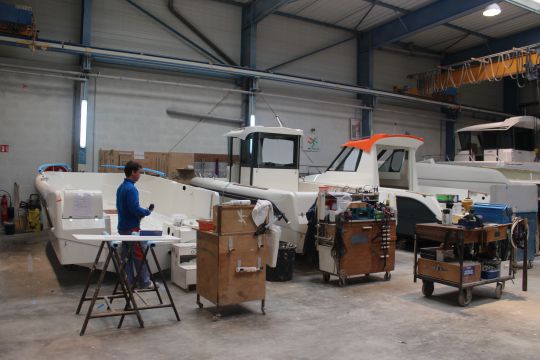
Homogenize the range
Ocqueteau has a wide range of boats (Abaco, Ostréa, Helmsman, Range Cruiser and even a sailboat!), but plans to reduce the number of models for sale in the future. This had already been the case in times of severe crisis "If the market changes, we'll eliminate boats from our range. We have the moulds, because we have the possibility to store them, but the skills to produce them disappear." charlotte explains.
Today, the range is composed of 3/4 outboard and 1/4 inboard "With a selling price higher than the outboard, the inboard represented 1/3 of our turnover."

An active network
Ocqueteau sells its boats only through a distribution network. Each dealer has a stock of 1 or 2 boats to present to customers. In total, the yard has around thirty dealers in France and 25 international dealers. The yard also exports 25%, primarily to Spain, which has also suffered a severe crisis. It is on the Atlantic coast that the network of distributors is most active, while the Mediterranean basin remains more difficult to break through for this Oleron site.


